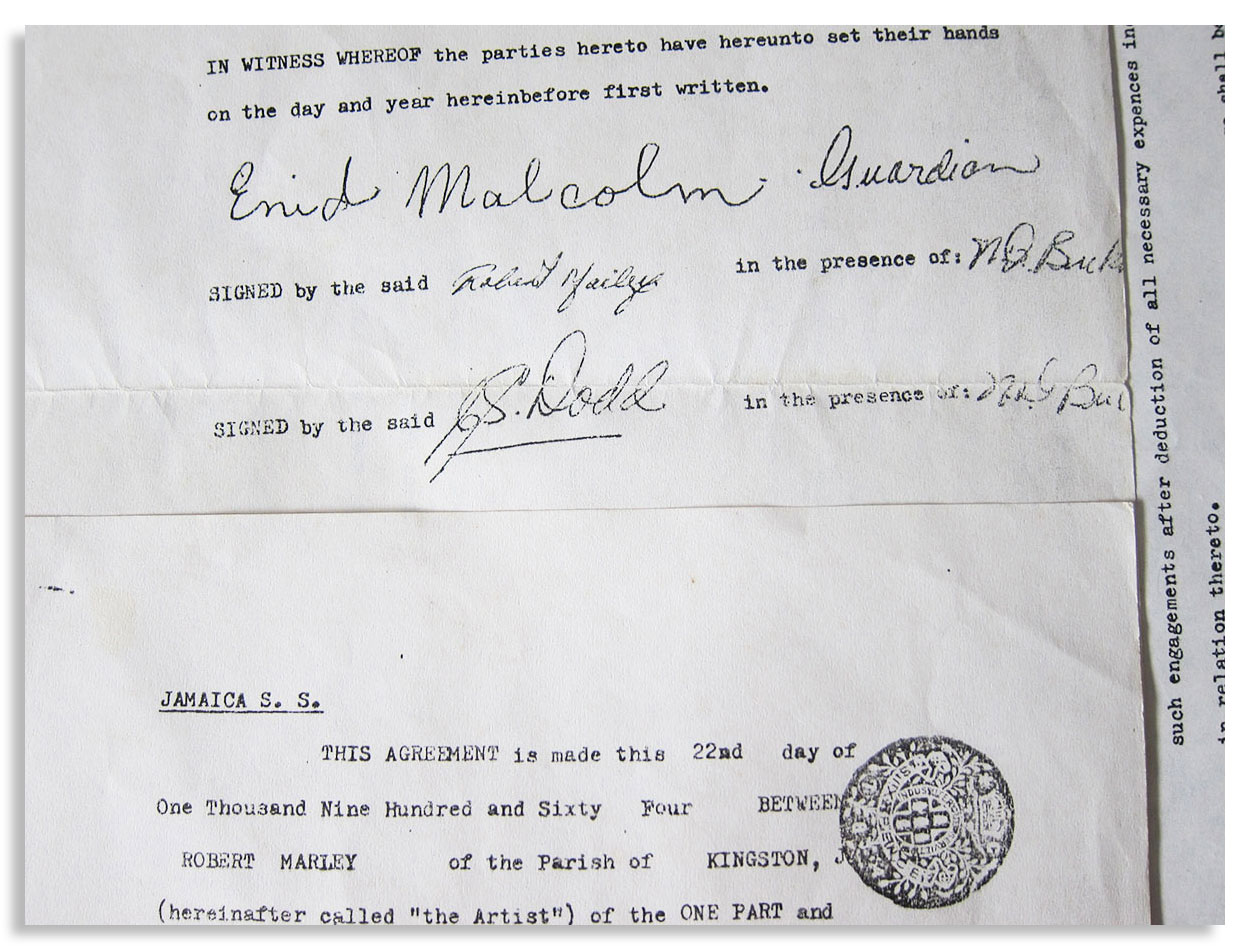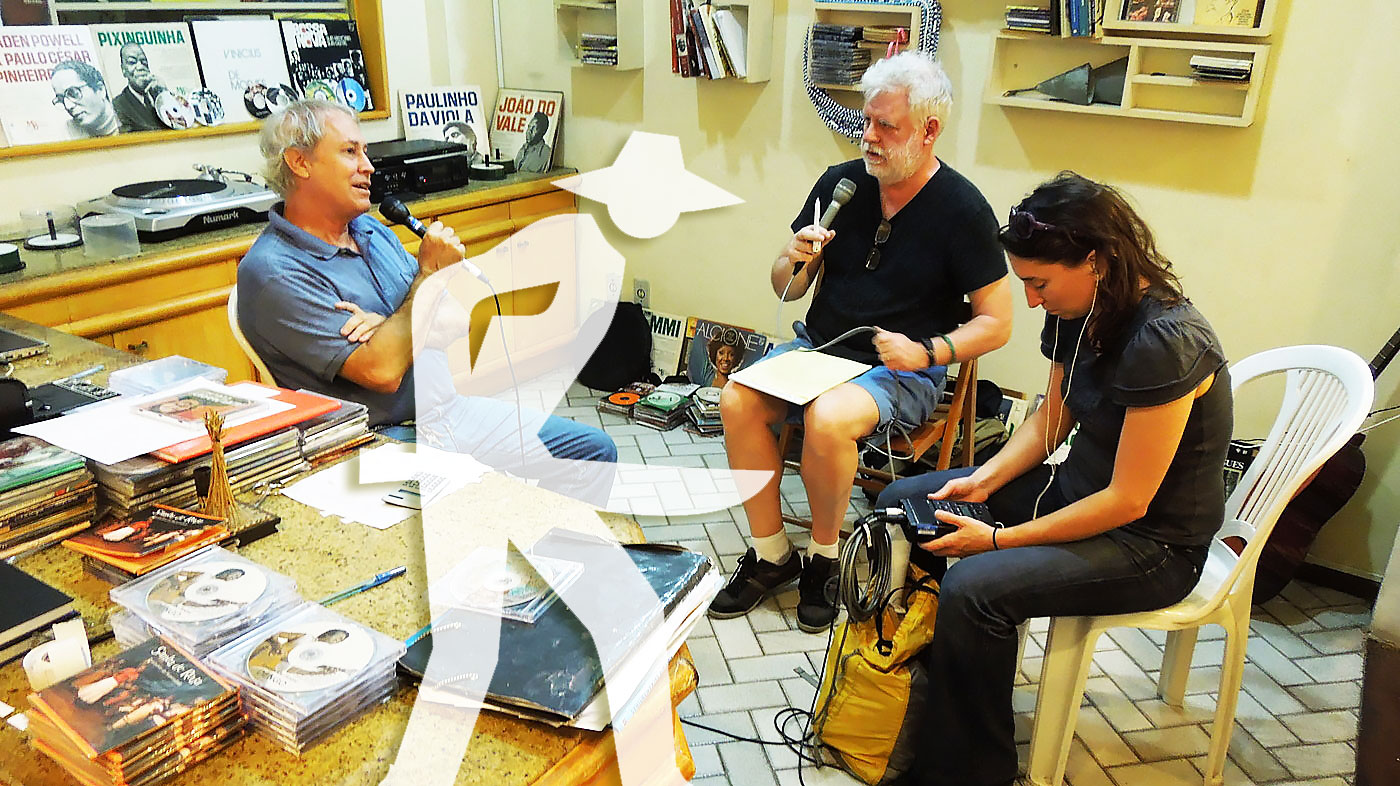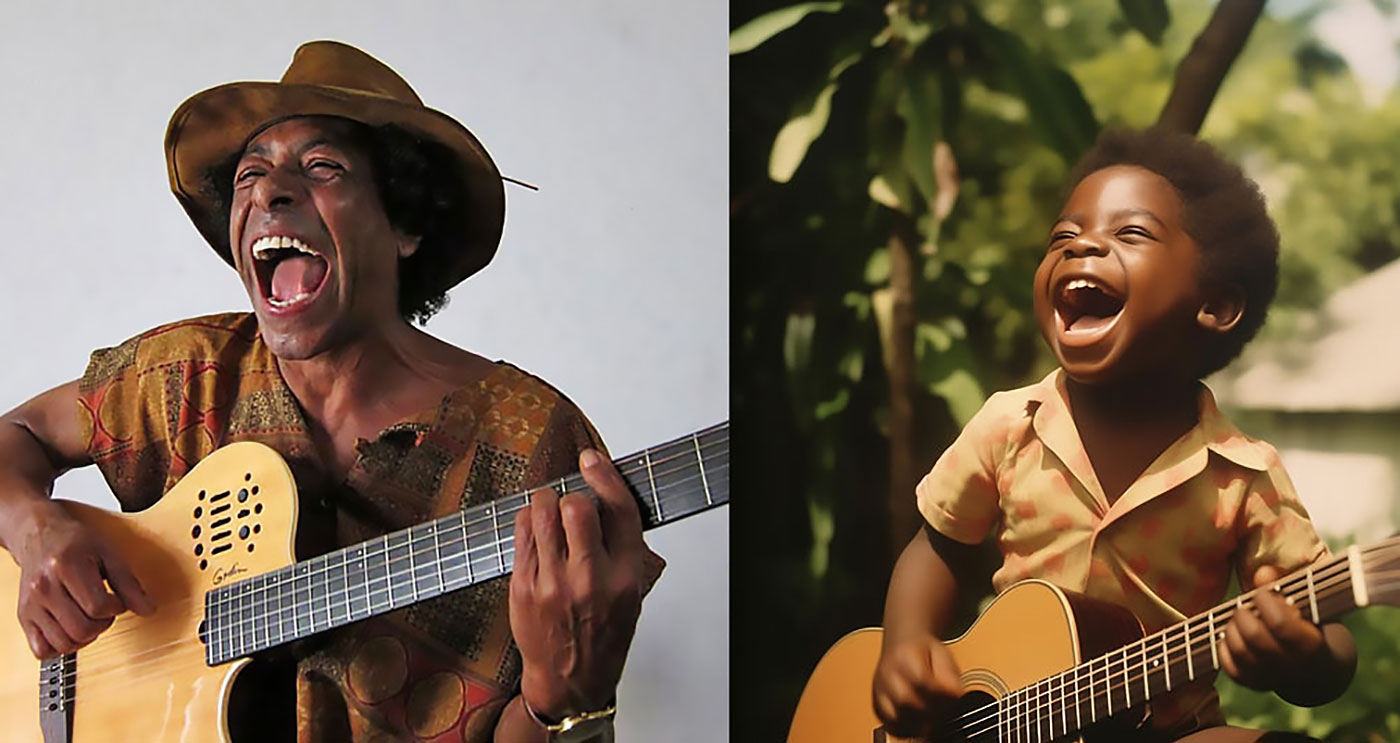CURATION
- from this page: by Title Holder
Network Node
- Name: Kenny Garrett
- City/Place: Glen Ridge, New Jersey
- Country: United States
Life & Work
-
Bio:
With his illustrious career that includes hallmark stints with Miles Davis, Art Blakey and The Jazz Messengers, Donald Byrd, Freddie Hubbard, Woody Shaw and the Duke Ellington Orchestra, as well as a heralded career as a solo artist that began more than 30 years ago, Kenny Garrett is easily recognized as one of modern jazz’s brightest and most influential living masters. And with the marvelous Sounds From The Ancestors, the GRAMMY® Award-winning Garrett shows no signs of resting on his laurels.
Kenny Garrett’s latest release, Sounds From The Ancestors, is a multi-faceted album. The music, however, doesn’t lodge inside the tight confines of the jazz idiom, which is not surprising considering the alto saxophonist and composer acknowledges the likes of Aretha Franklin and Marvin Gaye as significant touchstones. Similar to how Miles Davis’ seminal LP, On the Corner, subverted its main guiding lights – James Brown, Jimi Hendrix and Sly Stone – then crafted its own unique, polyrhythmic, groove-laden, improv-heavy universe, Sounds From The Ancestors occupies its own space with intellectual clarity, sonic ingenuity and emotional heft.
“The concept initially was about trying to get some of the musical sounds that I remembered as a kid growing up – sounds that lift your spirit from people like John Coltrane, ‘A Love Supreme’; Aretha Franklin, ‘Amazing Grace’; Marvin Gaye, ‘What’s Going On’; and the spiritual side of the church,” Garrett explains. “When I started to think about them, I realized it was the spirit from my ancestors.” Indeed, Sounds From The Ancestors reflects the rich jazz, R&B, and gospel history of his hometown of Detroit. More important though, it also reverberates with a modern cosmopolitan vibrancy – notably the inclusion of music coming out of France, Cuba, Nigeria and Guadeloupe.
“It’s Time to Come Home,” a sauntering yet evocative Afro-Cuban modern jazz original, kicks off the album. Garrett’s melodic passages, marked by capricious turns and pecking accents, signals a “call to action” for kids around the world to come home after playing outside all day. This incarnation reflects his experiences playing with iconic Cuban pianist and composer Chucho Valdés. Garrett then pays tribute to the late, great trumpeter and composer Roy Hargrove with the dynamic “Hargrove,” a bracing original that evokes the namesake’s mastery of reconciling hard-bop’s intricate harmonic and interactive verve with late-20th century hypnotic R&B grooves and hip-hop bounce. The song also references John Coltrane’s A Love Supreme, which accentuates both the earthy and spiritual nature of Hargrove’s music and Garrett’s saxophone virtuosity.
Traces of the Black American church also surge through “When the Days Were Different,” a warm mid-tempo original. “The idea was to take it back to the church,” Garrett explains. “It reminds me of being at a gathering with family and friends having a good time eating, drinking and spending quality time together.”
On the rhythmically intrepid “For Art’s Sake,” Garrett pays homage to two legendary drummers – Art Blakey and Tony Allen. Bruner concocts a stuttering rhythm that alludes to both modern jazz and Nigerian Afrobeat, while Bird adds polyrhythmic fire with his circular conga patterns.
Drums and percussion are again highlighted vividly on the swift “What Was That?” and “Soldiers of the Fields/Soldats des Champs.” The former finds Garrett in quintessential form as he navigates through a thicket of torrential polyrhythms and a jolting harmonic bed with the steely determination and dexterity associated with Coltrane and Jackie McLean. The latter is a magnificent two-part masterpiece that integrates martial beats, Guadeloupean rhythms and a haunting cyclical motif on which Garrett crafts pirouetting improvisations that dazzle with their initial lithe grace and increasing urgent wails. Garrett explains that “Soldiers of the Fields/Soldats des Champs” is a tribute to the legion of jazz musicians who fought to keep the music alive. “They’re the first ones to get hit and shot at in the line of fire on the fields of justice. ‘Soldats des Champs’ is also a tribute to the Haitian soldiers who fought against the French during the Haitian Revolution.”
The leader’s love for Afro-Cuban jazz returns on the dramatic title track, which begins with Garrett playing a slow melancholy melody on the piano before the music gives way to a soul-stirring excursion, filled with passionate vocal cries from Trible and moving Yoruban lyrics from Pedrito, paying respect to Orunmila, the deity of wisdom. “It’s about remembering the spirit of the sounds of our ancestors – the sounds from their church services, the prayers they recited, the songs they sang in the fields, the African drums they played and the Yoruban chants,” Garrett says. The album closes as it opens with “It’s Time to Come Home,” this time Garrett uses his saxophone as a rhythmic instrument to have a conversation with the percussionist without the vocal accompaniment.
Contact Information
-
Management/Booking:
Vernon H. Hammond
The Management Ark
116 Village Blvd, Suite 200
Princeton, NJ 08540
609-734-7403
[email protected]
Media | Markets
- ▶ Instagram: kennygarrett_
- ▶ Website: http://www.kennygarrett.com
- ▶ YouTube Channel: http://www.youtube.com/c/KennyGarrettOfficial
- ▶ YouTube Music: http://music.youtube.com/channel/UC80nkgMUoZzAcyty_Mo1svg
- ▶ Spotify: http://open.spotify.com/album/1PjB6iaRaTUUwdwDmzTNFd
- ▶ Spotify 2: http://open.spotify.com/album/1iygnpMlnC5R3HtPJ6dIF3
- ▶ Spotify 3: http://open.spotify.com/album/6wWTwjZnReqUVUNcX9nKOC
- ▶ Spotify 4: http://open.spotify.com/album/3hbxsG0MNq1k5SblPQ2CJc
- ▶ Spotify 5: http://open.spotify.com/album/4SDgQKBl6zelAx2Vh8whtg
- ▶ Spotify 6: http://open.spotify.com/album/0wulP6vNc363qbWjIgDGDq
Clips (more may be added)
-
Kenny Garrett - For Art’s Sake (Official Audio)
327 views
-
Kenny Garrett live | Jazzline | 2021
332 views
-
Kenny Garrett Beautiful Solo
288 views
The Matrix is a small world network. Like stars coalescing into a galaxy, creators in the Matrix mathematically gravitate to proximity to all other creators in the Matrix, no matter how far apart in location, fame or society. This gravity is called "the small world phenomenon". Human society is a small world network, wherein over 8 billion human beings average 6 or fewer steps apart. Our brains contain small world networks...
![]() Wolfram MathWorld on the Small World Phenomenon
Wolfram MathWorld on the Small World Phenomenon
![]() Matemática Wolfram sobre o Fenômeno Mundo Pequeno
Matemática Wolfram sobre o Fenômeno Mundo Pequeno
"In a small world, great things are possible."

It's not which pill you take, it's which pathways you take. Pathways originating in the sprawling cultural matrix of Brazil: Indigenous, African, Sephardic and then Ashkenazic, European, Asian... Matrix Ground Zero is the Recôncavo, contouring the Bay of All Saints, earthly center of gravity for the disembarkation of enslaved human beings — and the sublimity they created — presided over by the ineffable Black Rome of Brazil: Salvador da Bahia.
("Black Rome" is an appellation per Caetano Veloso, son of the Recôncavo, via Mãe Aninha of Ilê Axé Opô Afonjá.)
"Dear Sparrow: I am thrilled to receive your email! Thank you for including me in this wonderful matrix."
—Susan Rogers: Personal recording engineer for Prince, inc. "Purple Rain", "Sign o' the Times", "Around the World in a Day"... Director of the Berklee Music Perception and Cognition Laboratory
"Thanks! It looks great!....I didn't write 'Cantaloupe Island' though...Herbie Hancock did! Great Page though, well done! best, Randy"
"We appreciate you including Kamasi in the matrix, Sparrow."
—Banch Abegaze: manager, Kamasi Washington
"This is super impressive work ! Congratulations ! Thanks for including me :)))"
—Clarice Assad: Pianist and composer with works performed by Yo Yo Ma and orchestras around the world
"Dear Sparrow, Many thanks for this – I am touched!"
—Julian Lloyd-Webber: UK's premier cellist; brother of Andrew Lloyd Webber (Evita, Jesus Christ Superstar, Cats, Phantom of the Opera...)
"Thanks, this is a brilliant idea!!"
—Alicia Svigals: World's premier klezmer violinist
Developed here in the Historic Center of Salvador da Bahia ↓ .
![]() Bule Bule (Assis Valente)
Bule Bule (Assis Valente)
"♫ The time has come for these bronzed people to show their value..."
Production: Betão Aguiar
MATRIX MODUS OPERANDI
Recommend somebody and you will appear on that person's page. Somebody recommends you and they will appear on your page.
Both pulled by the inexorable mathematical gravity of the small world phenomenon to within range of everybody inside.
And by logical extension, to within range of all humanity outside as well.
MATRIX (PARDAL)
I'm Pardal here in Brazil (that's "Sparrow" in English). The deep roots of this project are in Manhattan, where Allen Klein (managed the Beatles and The Rolling Stones) called me about royalties for the estate of Sam Cooke... where Jerry Ragovoy (co-wrote Time is On My Side, sung by the Stones; Piece of My Heart, Janis Joplin of course; and Pata Pata, sung by the great Miriam Makeba) called me looking for unpaid royalties... where I did contract and licensing for Carlinhos Brown's participation on Bahia Black with Wayne Shorter and Herbie Hancock...
...where I rescued unpaid royalties for Aretha Franklin (from Atlantic Records), Barbra Streisand (from CBS Records), Led Zeppelin, Mongo Santamaria, Gilberto Gil, Astrud Gilberto, Airto Moreira, Jim Hall, Wah Wah Watson (Melvin Ragin), Ray Barretto, Philip Glass, Clement "Sir Coxsone" Dodd for his interest in Bob Marley compositions, Cat Stevens/Yusuf Islam and others...
...where I worked with Earl "Speedo" Carroll of the Cadillacs (who went from doo-wopping as a kid on Harlem streetcorners to top of the charts to working as a janitor at P.S. 87 in Manhattan without ever losing what it was that made him special in the first place), and with Jake and Zeke Carey of The Flamingos (I Only Have Eyes for You)... stuff like that.

Yeah this is Bob's first record contract, made with Clement "Sir Coxsone" Dodd of Studio One and co-signed by his aunt because he was under 21. I took it to Black Rock to argue with CBS' lawyers about the royalties they didn't want to pay (they paid).
MATRIX MUSICAL
I built the Matrix below (I'm below left, with David Dye & Kim Junod for U.S. National Public Radio) among some of the world's most powerfully moving music, some of it made by people barely known beyond village borders. Or in the case of Sodré, his anthem A MASSA — a paean to Brazil's poor ("our pain is the pain of a timid boy, a calf stepped on...") — having blasted from every radio between the Amazon and Brazil's industrial south, before he was silenced. The Matrix started with Sodré, with João do Boi, with Roberto Mendes, with Bule Bule, with Roque Ferreira... music rooted in the sugarcane plantations of Bahia. Hence our logo (a cane cutter).
A Massa (do povo carente) / The Masses (of people in need)

-
Add to my PlaylistA Massa - Raymundo Sodré (7,093 plays)
-
Add to my PlaylistSina de Cantador - Raymundo So... (6,909 plays)
-
Add to my PlaylistMagnetismo - Raymundo Sodré ... (6,353 plays)
-
Add to my PlaylistSacando a Cana - Raymundo Sodr... (5,957 plays)
-
Add to my PlaylistMêrêrê - Raymundo Sodré (5,465 plays)
-
Add to my PlaylistJardim do Amor - Raymundo Sodr... (4,677 plays)
-
Add to my PlaylistDebaixo do Céu - Raymundo Sodr... (4,151 plays)
-
Add to my PlaylistDesejo de Amar - Raymundo Sodr... (3,861 plays)
-
Add to my PlaylistOração pra Yá Oxum - Raymundo ... (3,741 plays)
-
Add to my PlaylistYá África - Raymundo Sodré (3,509 plays)
-
Add to my PlaylistMeu Rio, Cadê o Papel - Raymun... (3,177 plays)
-
Add to my PlaylistCasa de Trois - Raymundo Sodré... (2,896 plays)
-
Add to my PlaylistMulher é Laço que Prende o Coração do Vaqueiro - R... (2,556 plays)





























































































































































































































































































































































































































































